#cora ginsburg
Text

White Embroidered Linen Dress, French, 1804-1806.
Cora Ginsburg.
#white#dress#extant garments#1800s extant garment#1800s#1804#1800s france#1800s dress#linen#embroidery#french#france#cora ginsburg#reign: napoleon i
86 notes
·
View notes
Photo


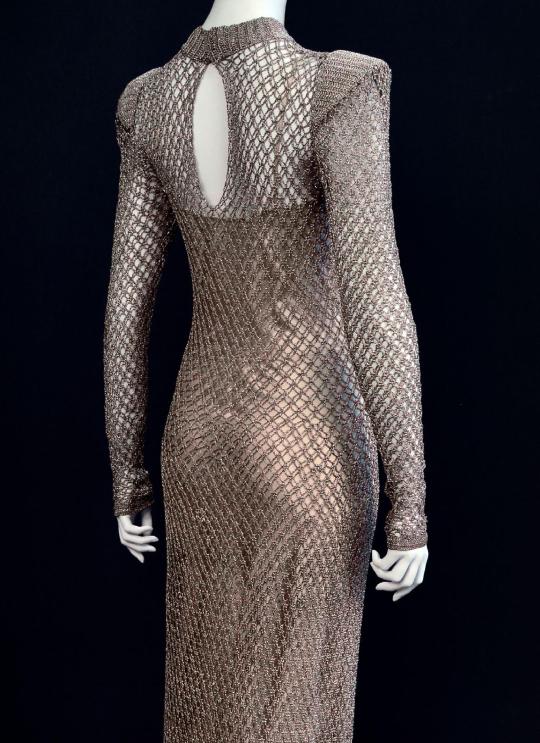
Crocheted Evening Dress
Kostio de War
c.1938
Capitalizing on a broader enthusiasm for hand knitting that emerged in the mid-1930s, [Kostio de War] became famous for her unique hand-knit and crocheted evening gowns. Initially, she explored the idea in chenille thread, pairing sheaths in “loose, large mesh patterns” over slips of “lacquered satin,” as Women’s Wear Daily described in 1935. A sometimes enthusiast for surreal touches, she competed briefly with Elsa Schiaparelli for headlines, particularly when the latter also introduced several hand-knitted pieces in her winter 1935 collection. The U.S. press, however, found several distinct virtues in the elegantly practical garments made by Kostio de War: the dresses could be easily rolled up for travel and resisted wrinkling, while her heavier knitted metallic evening jackets could quickly dress up a simple dinner dress. In 1937, Paris-Soir reported on the popularity and practicality of knitted garments for sport as well as for evening wear, writing, “The more we lead busy lives, the more precious handmade goods become.” They announced that Mme. Kostio de War had recently unearthed in central Europe an amusing book from about 1830 containing instructions for a variety of unusual historical stitches, which she had used in crafting her latest collection: “For evening, she has created with threads of copper, steel, [and] platinum, gowns of the most rare sumptuousness.” In 1938, Denise Veber of the French paper Marianne called these “miracle” evening gowns of gold or silver very simple, but nevertheless of an almost magical (féerique) appearance. (Cora Ginsburg Auctions)
Cora Ginsburg Auctions (2020 Modern)
#evening dress#fashion history#vintage fashion#1930s#kostio de war#20th century#crochet#1938#silver#cotton#france#up close#cora ginsburg auctions#popular
1K notes
·
View notes
Photo
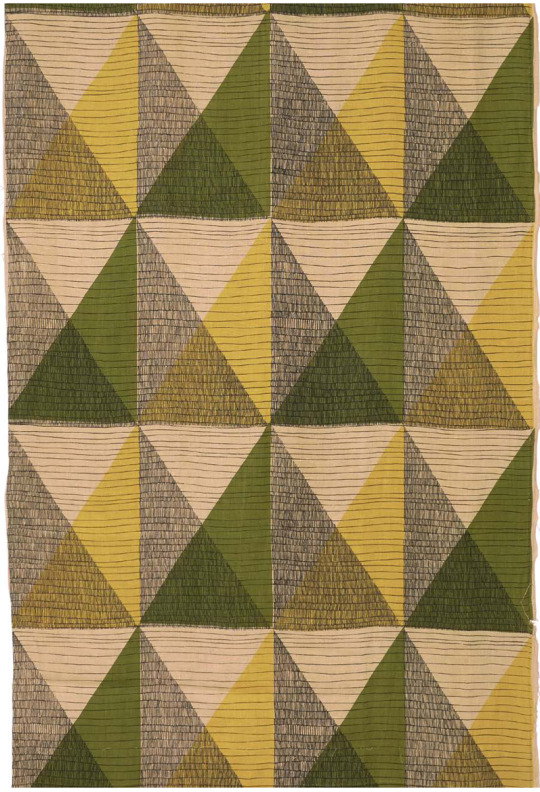
Leo and Gretl Wollner, Trapeze, (printed linen), Laverne Originals, Inc., New York, NY, ca. 1954 (pdf here, issuu here) [Cora Ginsburg LLC, Sharon, CT and New York, NY. © Leo and Gretl Wollner]
#design#art#textile#geometry#pattern#leo wollner#gretl wollner#laverne originals#cora ginsburg lcc#1950s
82 notes
·
View notes
Text
Silk Taffeta Day Dress, c. 1837-1838

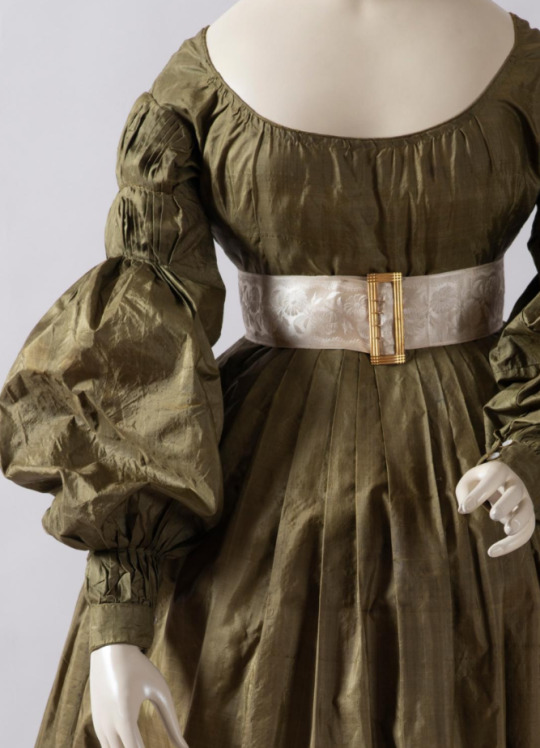
Cora Ginsburg
487 notes
·
View notes
Photo
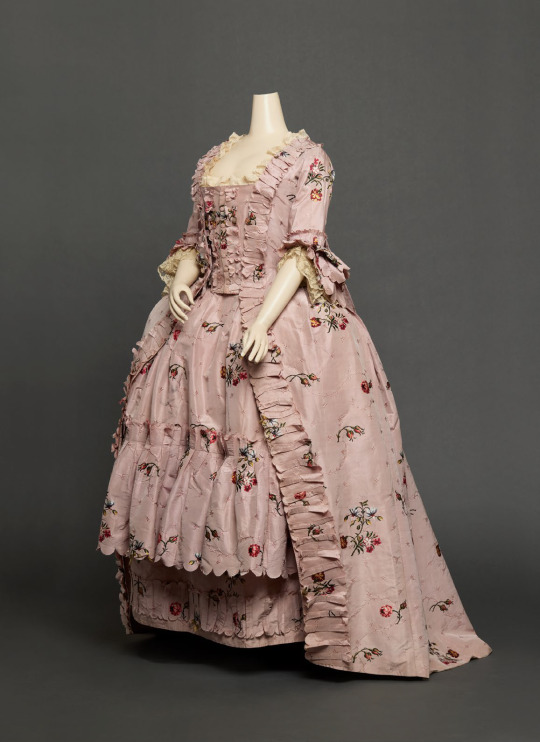
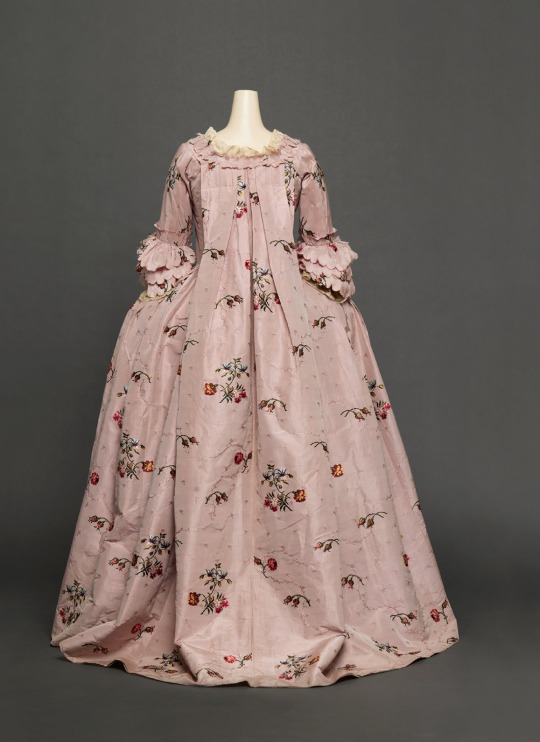

Robe à la française ca. 1750-60
From Cora Ginsburg
2K notes
·
View notes
Text


No, you are not imagining things. This is not a Betsey Johnson dress somehow masquerading as a historical garment. There was no time travel. This is a real gown from the mid(ish) 1700s made of Spitalfields silk.
Like many extant gowns, the secret is in the stitching. We know a few things about this dress due to its construction. 1) it was remade to fit changing aesthetics, likely during the same century and 2) it's a selvedge dress, meaning that unlike mantuas, it's made of pieced together silk (most expertly done) to show the appearance of an undisturbed piece of fabric.
The bright, floral brocade pattern is not at all uncommon, as the motifs of this era were certainly vivid in every sense. I particularly love the contrasting deep brown of the stomacher with the rest of the dress. It's relatively simple in terms of the times, but I adore it!
From Cora Ginsburg.
#baroque#history of fashion#threadtalk#textiles#costume history#historical costuming#costume#fashion history#silk dress#spitalfields#brocade
2K notes
·
View notes
Photo


An English-made tea gown (1875-1880) made from Japanese fabrics in the early days of Japonisme. Embroidered over hand-drawn silk fabric. Cora Ginsburg 2022 Catalog. Text by Hiroko Miyamoto
866 notes
·
View notes
Photo
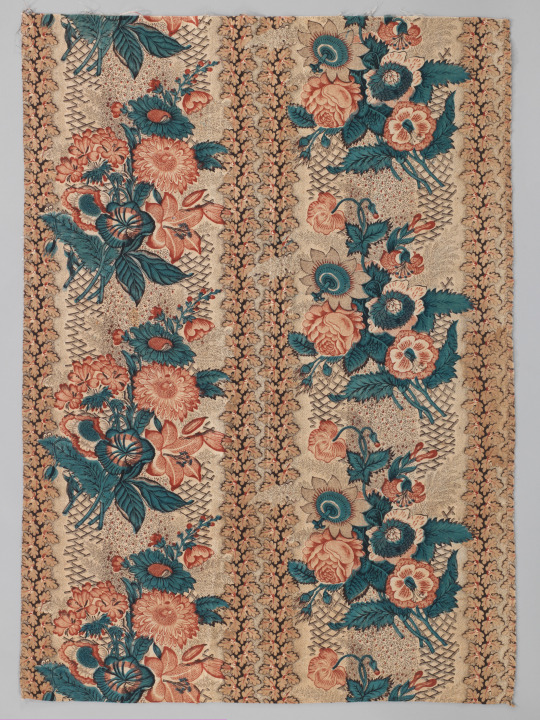
Piece. ca. 1830. Credit line: Gift of Cora Ginsburg, 1971 https://www.metmuseum.org/art/collection/search/229322
#aesthetic#art#abstract art#art museum#art history#The Metropolitan Museum of Art#museum#museum photography#museum aesthetic#dark academia
36 notes
·
View notes
Text
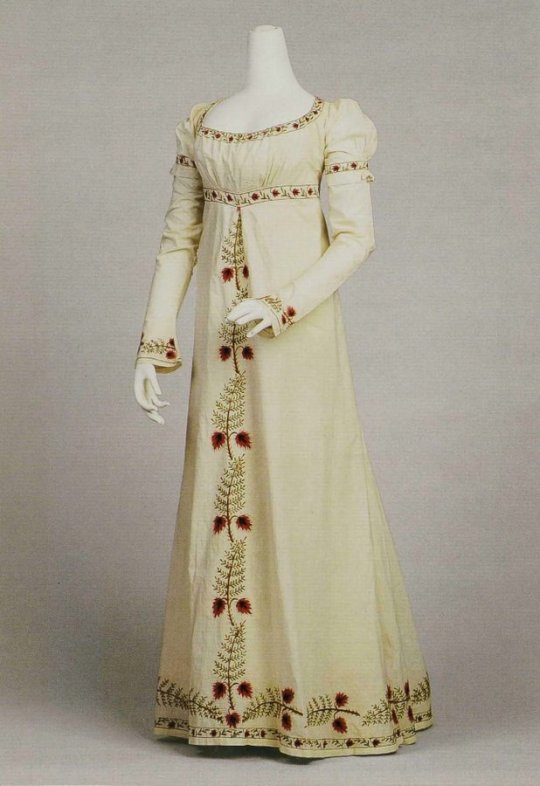
A frocking fabulous gravy magnet of 1804! Via Cora Ginsburg.
3 notes
·
View notes
Text
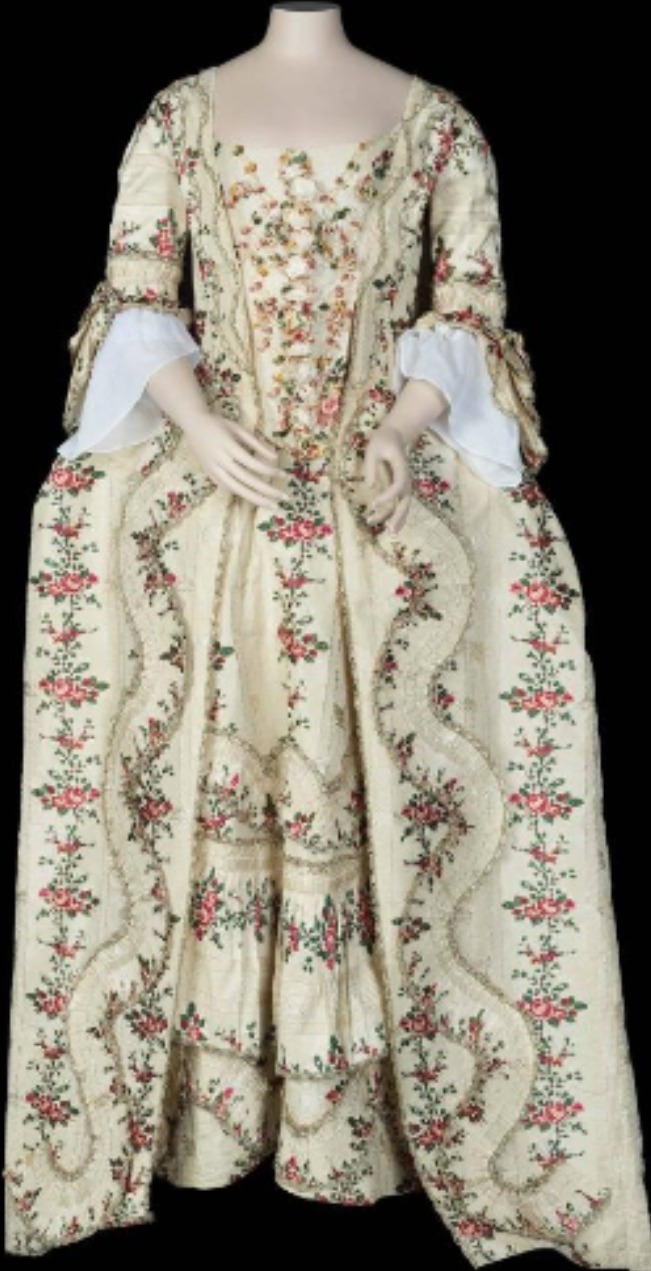

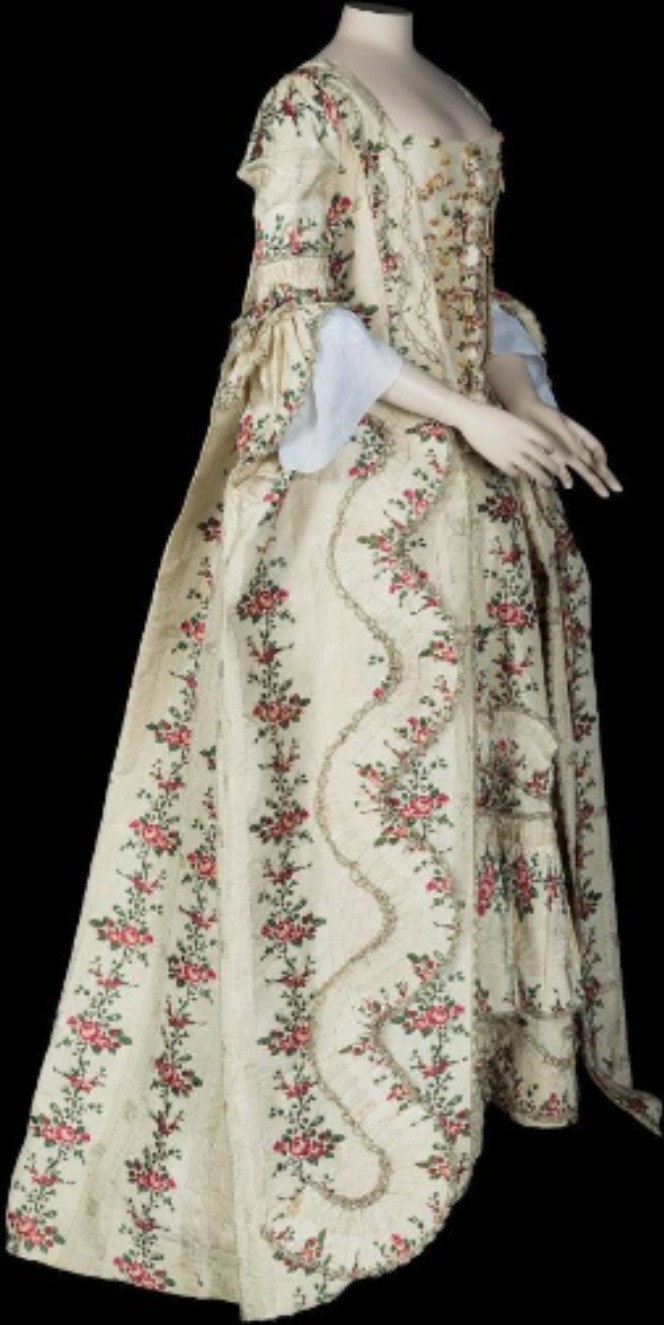
Robe à la Française
DATE: 1770-1780
ORIGIN: England
MEDIUM: Silk brocaded with silk, trimmed with silk; linen bodice and sleeve lining.
Colonial Williamsburg
Gown
England, 1770-1780
Brocaded silk; linen and silk linings; linen tape; silk fringe; linen and silk sewing threads; replacement brass hooks
G1991-472a, gift of Cora Ginsburg
The gown's fitted linen lining holds the front close to the body while the loose rear pleats fall gracefully from the shoulders. The deep back pleats were sewn in position through to the lining about four inches down from the neckline. They are caught with long running and herringbone stitches. Additional pleats over the hips add side fullness.
Colorful brocading threads decorate the ribbed silk textile. Brocading threads are used only where the pattern requires extra color. They do not extend from selvage (edge) to selvage. The textile is further decorated with a subtle subpattern using cream-colored warp and weft floats.
The bodice was worn with a triangular stomacher at the center front. The stomacher and the matching petticoat are shown elsewhere in the exhibit.
0 notes
Photo
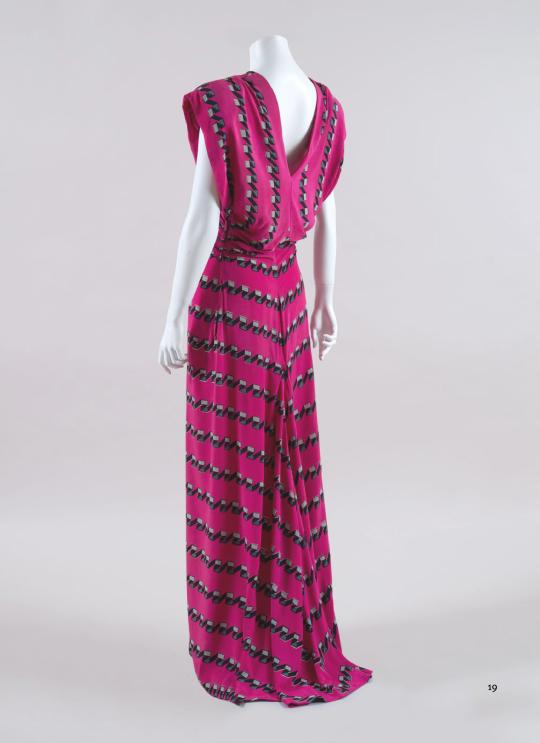
Dress
Norman Norell
1945
The MET via Cora Ginsburg (Accession Number: 2020.207a, b)
Currently on view: In America: An Anthology of Fashion
#dress#fashion history#vintage fashion#1940s#norman norell#1945#20th century#pink#rayon#united states#the met#normally i vibe with norman#but i'm not vibing with this
259 notes
·
View notes
Photo
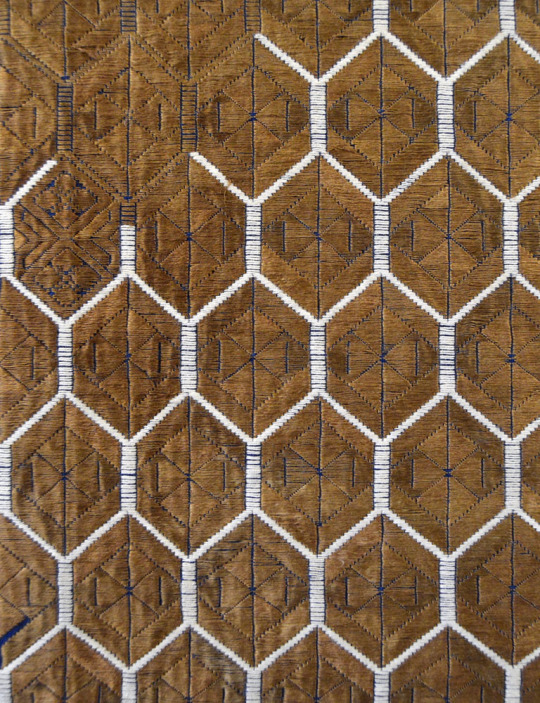
Silk embroidery on indigo-dyed cotton, Chinese minority (Miao), Mid-20th Century [Cora Ginsburg LLC, Sharon, CT and New York, NY]
79 notes
·
View notes
Text
Visiting dress, 1864-65. Cora Ginsburg.


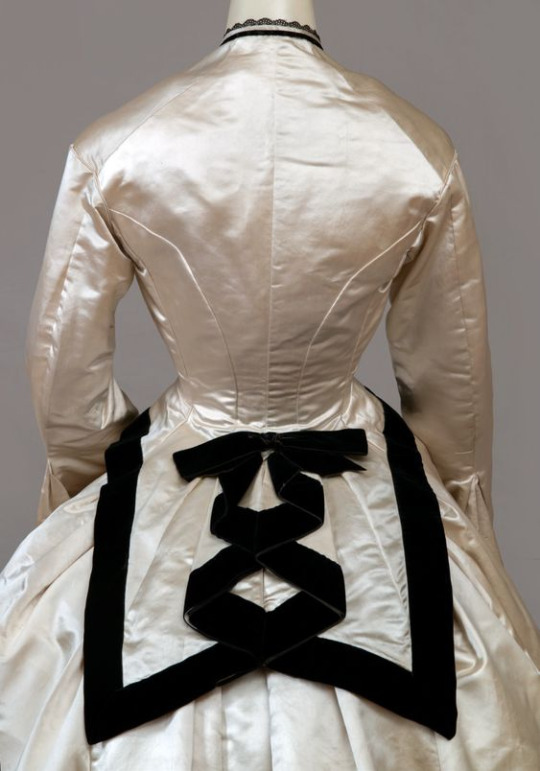
2K notes
·
View notes
Photo

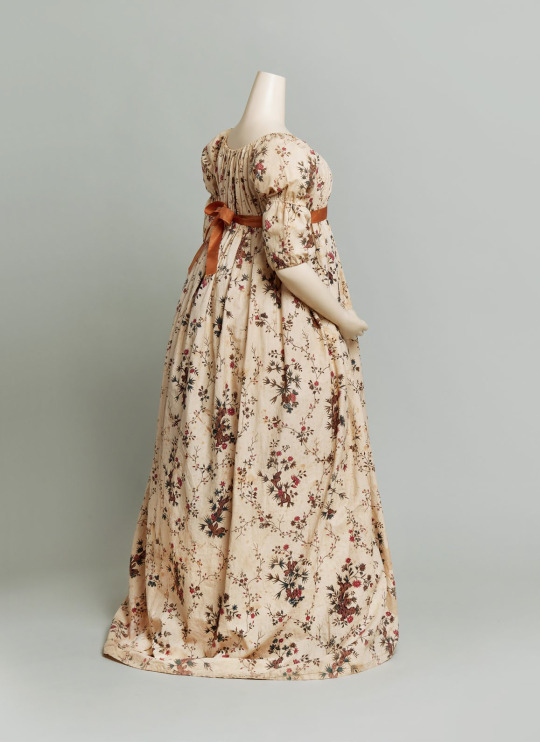
Gown ca. 1790-1810
From Cora Ginsburg
2K notes
·
View notes
Text
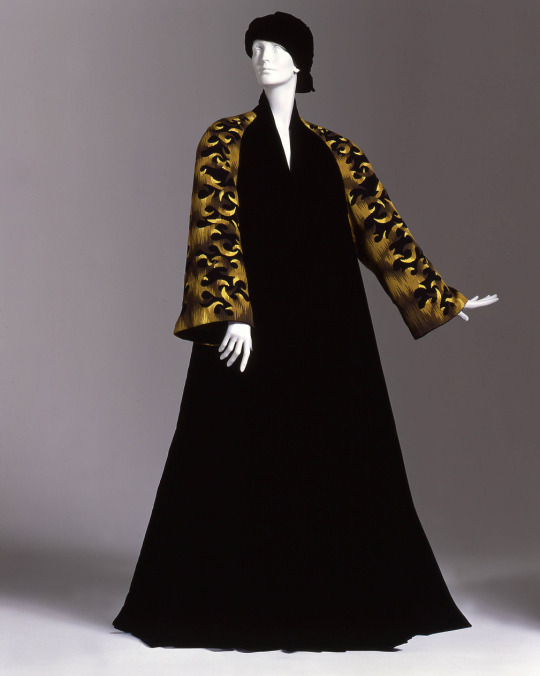
Silk velvet and wool tapestry evening coat
Claude Saint-Cyr, the sleeves designed by Jean Picart le Doux, woven at the Atelier Pinton
French, ca. 1950
This striking coat merges the world of French couture with the longstanding tradition of Frenchtapestry weaving. Claude Saint-Cyr (1910-2002), whose real name was Simone Naudet, was a leading French milliner of the mid-twentieth century. She opened her own establishment in 1937 on the rue du Faubourg Saint-Honoré and ran a successful business for decades onward. Saint-Cyr's hats were worn by stylish women worldwide and featured in leading fashion magazines.
The unique inspiration for using tapestries in her designs came when artist Georges Martin (d. 1961), Saint-Cyr's husband, used tapestry to recover chairs in her salon. Saint-Cyr found the result so beautiful that it led to her "Tapisseries" line of hats in 1950. This idea was soon expanded with a collection of short jackets and coats; weavings which Saint-Cyr incorporated into her work were collaborations with France's leading tapestry designers, including Slavik, Jean Picart le Doux(1902-82), and her husband. The dramatic sleeves of this sweeping evening coat, in shades of golden yellow, ochre, brown, and black, were designed by Picart le Doux and woven at the Aubusson firm of Ateliers Pinton.
In 1939, at the request of the French Ministry of Education, Jean Lurçat (1892-1966) was charged with revitalizing the Aubusson tapestry industry. Under Lurçat's direction, ateliers began producing tapestries of modern designs. In 1945, Lurçat, Picart le Doux, and Marc Saint-Saëns (1903-1979) founded L'Association des Peintres-Cartonniers de Tapisserie to promote the tapestry revival andpresent tapestries as original works of art. Picart le Doux's style—bold yet also retaining elements of simplicity—exemplifies the modernist approach to tapestry designs of the mid-century. His tapestries display these characteristics to great effect with motifs such as the flame-like design he often used, as on the tapestry sleeves of the Saint-Cyr coat. Twentieth-century design offers many innovative examples of partnerships between artists anddesigners from different disciplines. Claude Saint-Cyr's coat presents a highly successful testament to those creative endeavors which united many talents.
Provenance: From the personal wardrobe of Claude Saint-Cyr
Published in the Cora Ginsburg 2009-2010 catalogue.
0 notes